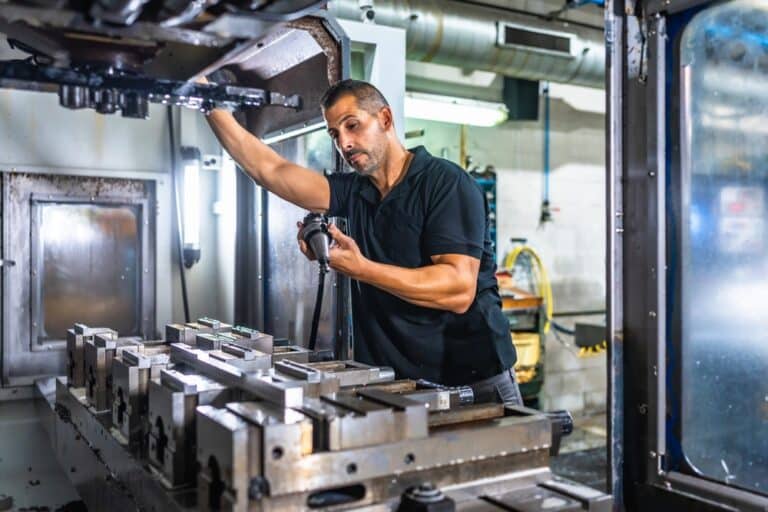To make this measure more effective and tailored to the specific context of your company, we recommend that you first perform an overall analysis of your energy situation.
Machining of mechanical parts with fine features and complex shapes
The measure aims to replace laser cutting and etching of mechanical parts with the photochemical machining (photo etching) process which consists of “printing” the component design onto a photoresist laminated onto a metal sheet. The areas of photoresist that have not been printed are removed, exposing the metal, which is then chemically removed.
Chemical etching, also known as photochemical machining, photochemical milling or photo etching, can be used to create complex and high-precision components with extremely tight tolerances from almost any metal.
This measure can lead to a very significant reduction in electricity consumption. The installation of this technological innovation requires a partial production shutdown for its implementation and would entail a medium- to long-term return on investment.
Selecting this technology depends on many factors, which are primarily the thickness and complexity of the parts, as well as the number of parts to be produced.
Miscellaneous savings
For the machine, financial savings will mainly come from reduced electricity consumption, which can be decreased by up to 80%. Photochemical machining requires metal parts to be washed with water maintained at a temperature of 20 °C, a printer (inkjet), UV lighting and a pump to spray the etchant dissolving the metal, all of which consume little energy.
Apart from energy savings and increased cutting precision, photochemical machining reduces material stress. Since the etching and cutting process does not involve the application of heat or physical impact, thermal stress and cutting problems are completely eliminated by photochemical etching. Likewise, there is no need for deburring, given the absence of burrs on the edges of the parts.
State subsidies
Aides étatiques
Please note: any application for government or non-government subsidies must comply with the “incentive effect”, subject to compliance with the subsidy conditions.
To ensure that the incentive effect of the aid is respected, no binding commitments may be made (acceptance of a quote; advance)
- SME Packages – Sustainability
- Aid for small and medium-sized companies, covering up to 70% of eligible costs for carrying out a project aimed at reducing their environmental impact. The total project cost must be between €3.000 and €25.000 excluding VAT.
- For more information :
- Chambre des Métiers for craftsmen (Chamber of Skilled Trades and Crafts)
- Chamber of Commerce for companies in the non-craft sectors
- Environmental protection scheme – Investment aid for the protection of the environment
- Verification of company eligibility and costs: General Directorate for Industry, new Technology and Research
- Support in drawing up the aid application file prior to submission to the Ministry of the Economy
- For any questions: Luxinnovation
- More information and guidance for companies on investing in the environment can be found in the Simplified Guide for Companies
N.B. While several state subsidies cannot be granted for the same project, they can be combined with supplier subsidies.
Subsidies from electricity and natural gas suppliers
Since 2015, natural gas and electricity suppliers are required to make energy savings for consumers under the obligation scheme. Since then, energy suppliers have been offering support and advice, as well as subsidy programmes for consumers to implement energy efficiency measures. The amount of the premium is proportional to the annual energy saving. The following suppliers offer this service for companies:
N.B. Supplier subsidies can be combined with a state subsidy for the same project.
